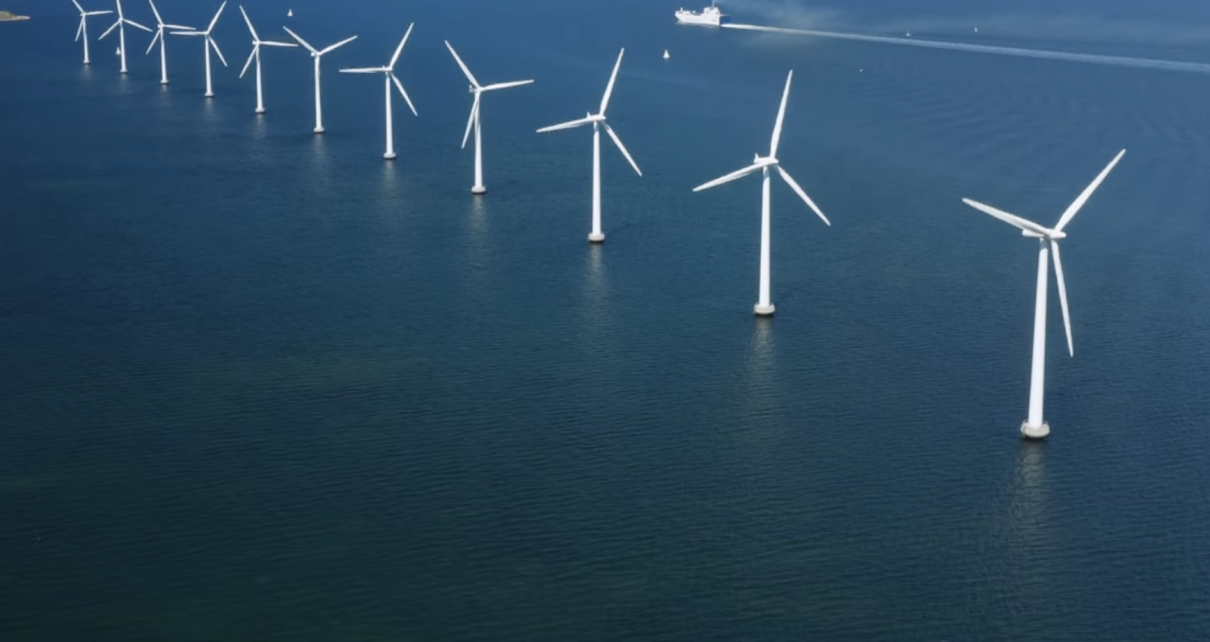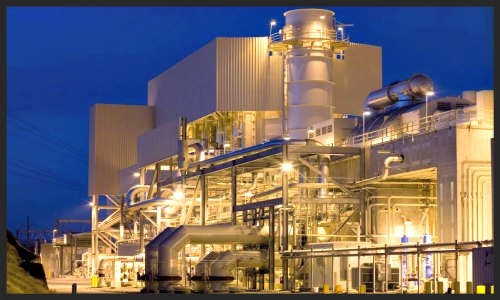
Offshore Wind farm. (Photo: Energy.ca.gov)
Ringside: The Numbers Behind CARB’s Goal of ‘Net Zero’
CARB, and the state legislature, should recognize the ongoing necessity for oil and natural gas, as well as nuclear power
By Edward Ring, August 30, 2024 6:00 am
 Nearly every analysis of energy policy in California, to the extent it delves into the numbers, tends to focus on one variable, CO2. But if you’re just trying to figure out how much energy we use today, where it’s coming from, and where we intend to source the clean energy of tomorrow, data on CO2 emissions is unhelpful. To understand those tradeoffs, you have to talk about units of energy, namely, TBTUs and gigawatt-hours.
Nearly every analysis of energy policy in California, to the extent it delves into the numbers, tends to focus on one variable, CO2. But if you’re just trying to figure out how much energy we use today, where it’s coming from, and where we intend to source the clean energy of tomorrow, data on CO2 emissions is unhelpful. To understand those tradeoffs, you have to talk about units of energy, namely, TBTUs and gigawatt-hours.
So here, using those variables, and in as few words as possible, is a breakdown of where we are, and where the California Air Resources Board (CARB) intends to take us within just two decades.
Californians today consume roughly 7,000 TBTUs of raw energy inputs per year. That acronym stands for “trillion British Thermal Units.” This variable is often used when measuring and reporting large amounts of energy such as produced or consumed by states or nations. For example, the entire world uses around 600,000 TBTUs per year; the United States uses not quite 100,000 TBTUs per year. That’s how much energy goes into the system. How much of that energy actually turns into useful services?
We are still not very good at converting raw energy inputs into so-called energy services. Estimated end-user consumption of energy in the form of horsepower, heating and cooling, pumping, communicating and computing, etc., is only 2,500 TBTUs per year in California. Approximately one-third of the energy we combust or transmit or electrify is realized by end users, and the other two-thirds ends up as friction, exhaust, and other so-called “parasitic losses.” That’s a lot of wasted fuel.
Improving the efficiency between raw energy inputs and actual energy services is a tremendous opportunity, and drives much of the push for electrification. For example, EVs with onboard batteries, taking into account the charge/discharge cycle of the battery and regenerative braking, convert electricity into traction at an efficiency of around 80 percent. It is rare for any vehicle with an internal combustion engine to achieve better than 40 percent efficiency.
Skip then to the stated goal of the CARB’s 2022 Scoping Plan Update where they set a goal of 500,000 gigawatt-hours per year of electricity production by 2045. Let’s assume, optimistically, that this electricity can be delivered and converted into end user energy services at an efficiency of 80 percent. This means 400,000 gigawatt-hours of power will be realized in the form of horsepower, heating and cooling, etc. But 400,000 gigawatt-hours is only equivalent to 1,364 TBTUs, only 55 percent of the 2,500 TBTUs of energy services Californians currently consume per year.
These facts call into question some of CARB’s most fundamental assumptions in their scoping plan.
It is theoretically possible that by adopting more efficient means of converting California’s energy inputs – currently 80 percent of it is oil and natural gas – into energy services, we can dramatically lower our energy inputs. It is possible that we can lower those 7,000 TBTUs of energy inputs by half. That is, if we converted raw fuel into end user energy services at an efficiency of 70 percent instead of the current 35 percent, our raw energy inputs per year could decrease from 7,000 TBTUs to around 3,500 TBTUs. But that is an absolutely best case scenario.
Meanwhile, California’s end-user energy consumption will not decrease between now and 2045. If anything, total demand for energy services in California will increase because of expected population growth along with the growth of AI and automation. By 2045, we are still going to have to deliver at least 2,500 TBTUs of end user energy services per year. And if we push into the system CARB’s production goal of 500,000 gigawatt-hours, that barely gets us halfway there. Where will the rest of the energy come from?
CARB’s scoping plan references several options for non-electrical sources of energy, but does not offer plausible choices that begin to approach the amount they’re going to need. Hydrogen via electrolysis, for example, requires electricity, as do most emerging technologies for producing synfuel. Ramping up in-state biofuel farming to cover a gap this big defies the realities of yield per acre, fertilizer requirements, and perennially unfulfilled promises regarding algae and cellulosic technologies. Maybe there will be unforeseen breakthroughs. There always are. But CARB should just admit they don’t know where this fuel is going to come from.
Equally questionable are CARB’s plans to reach even 500,000 gigawatt-hours of net zero electricity, since they acknowledge either no role, or a very limited role, for natural gas and nuclear power. Their stated goal to increase wind and solar electricity by 400 percent over 2022 production will only result in 217,000 gigawatt-hours, less than half of their target. A generous estimate for geothermal and biomass combined might be another 80,000 gigawatt-hours. What else? Bobbing wave buoys? Bovine flatus?
We are working on a thorough analysis of CARB’s energy plan for California that will be released later this year. But it is already clear that CARB is underestimating how much electricity we are going to need in a net zero environment, and they don’t have a credible plan, using renewables, to deliver the amount of electricity they are calling for. They also have not provided a credible plan to generate the carbon neutral thermal fuels that will be necessary for those applications where electricity is not an option.
For these reasons, CARB, and the state legislature, should recognize the ongoing necessity for oil and natural gas, as well as nuclear power. They should be exploring ways to utilize these fuels in a manner that mitigates their impact on the environment, instead of clinging to the fantasy that they can be peremptorily eliminated.
Carbon accounting is an obfuscating waste of resources. It redirects private investment and public subsidies away from producers of TBTUs and gigawatt-hours, and instead enriches consultants, accountants, academics, activists, and bureaucrats.
- Ringside: Reversing California’s Policies of Scarcity - January 8, 2026
- Ringside: What is the Future of California’s Republican Party? - December 31, 2025
- Ringside: CA GOP Just Blew $46 Million for Nothing – Here’s How They Can Avoid Repeating That Mistake in 2026 - December 24, 2025





Rewriting the Beach Boys song:
“I wish they all could be North Koreans now.”
CARB does not get to write laws. The Chevron defense is no longer valid.